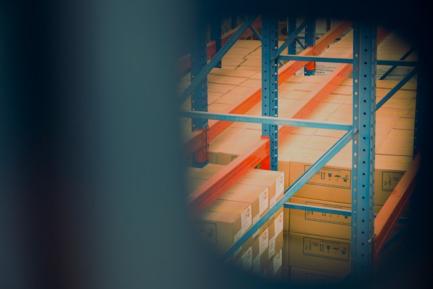What is happening with industry in the world?
We look at the cooling of the global manufacturing sector at a time marked by the convergence of various factors: the aftermath of the pandemic, the pull effect of China and the repercussions of the energy crisis for European industry.

Since the beginning of the year, several indicators have been showing a clear divergence between activity in the manufacturing sector and the services sector. In fact, according to the global PMIs, manufacturing activity has been cooling since the beginning of last year (and is already stagnant or declining in some countries), while the services sector has shown a significant recovery.
Part of this divergence between manufacturing and services responds to their different cyclical nature. Consumption of durable goods and manufacturing production are highly cyclical and sensitive to changes in monetary conditions. It therefore follows that the significant tightening of global monetary conditions since the beginning of 2022 has ended up cooling activity in the industrial sector. However, there are other reasons why this discrepancy between the sectors is now at its peak since the 2008 financial crisis.

The outbreak of COVID and the lockdowns imposed led to unprecedented disruptions in global distribution chains. As they slowly began to reactivate, companies began to accumulate inventories as a «precaution». Moreover, as the restrictions were lifted, consumers shifted their spending to services at the expense of expenditure on goods, especially durable goods. These two factors explain why the industrial sector has such high inventory levels, which are now limiting production growth. In fact, the higher the inventories, the weaker the performance of new production in industry. This relationship is clearly evident in the PMI surveys, which reveal that the inventory problem is particularly acute in euro area countries. Moreover, with the global appetite for services still high, a substantial and sustained rebound in industrial activity in the coming months seems unlikely.

Hopes that China’s reopening would be the catalyst for the wider global economy, and for industrial activity in particular, are being dashed. The Chinese economy’s strong start to the year, after the end of three years of zero-COVID policies, has given way to a phase of apathy: so far this year, its industrial production has grown by just 4% (9% on average between 2010 and 2019) and imports fell by 7%. The countries most affected by the weakness of Chinese imports are those with some of the closest trade ties, including South Korea, Japan, Taiwan and ASEAN countries, which together account for almost a third of Chinese imports, as well as the EU with 14%, the US with 8% and Australia with 7%.
Moreover, however, the Chinese economy is following a very different growth pattern from that shown in other recoveries: the driver of this recovery is private consumption,1 particularly in services, which has a lower capacity to act as a catalyst and «pull» other domestic sectors and the international economy along with it. In the third chart, we break down the gross output of the Chinese economy into (i) the domestic value added (DVA) generated directly by a given sector (direct DVA); (ii) the DVA that a particular sector generates indirectly in other sectors within the country (indirect DVA), and (iii) the VA that is generated abroad and imported by China (foreign VA). In other words, both indirect DVA and foreign VA offer us an indication of the capacity of the domestic and foreign «pull effect», respectively, of each particular sector.
We see that the manufacturing sector has a significant foreign pull effect (in particular, in industries with more globally integrated value chains, such as electronics). On the other hand, services (in particular, face-to-face services, such as hospitality) have a much smaller foreign pull effect, which explains why the current pattern of the Chinese economy’s recovery is not «pulling» the world economy up with it.
Indeed, the data support this viewpoint. For example, the growth of EU exports to China in the current year to date stands at just 2.0%, compared to rates of around 10% recorded between 2010 and 2019. In addition, the machinery and transport equipment sector is showing notable weakness:2 this sector accounts for 50% of Europe’s total exports to China and those exports have fallen by 8% this year (while exports to the rest of the world grew by 15%).3
- 1. Private consumption is estimated to have contributed 3 pps to the 4.5% growth of Q1 2023 (compared with 1.6 pps in the case of investment and 0.1 pps for foreign trade), whereas in previous recovery periods the «heavy lifting» was done by investment. For instance, following the 2008 financial crisis, in 2009-2010 China recorded average growth of 10% and an average contribution from investment of over 6 pps.
- 2. Under the definition used by Eurostat (SITC Rev. 3), the product range within the machinery and transport equipment sector is extensive and includes the vast majority of high-tech products. Among others, it includes industrial machinery, telecommunications, electrical and electronic products, as well as transport equipment.
- 3. We use monthly export data from Eurostat at the aggregate and sector levels. Most recent available data: April 2023. In addition, in the case of China, we must recall the «favourable» base effect related to the wave of lockdowns imposed in the country between February and May 2022.

The energy crisis unleashed by the war in Ukraine is particularly affecting industry in Europe. As part of its strategy to minimise the impact of the surge in energy prices over the past year and to decouple the continent from Russian gas supplies, the EU put forward a plan to cut gas usage by at least 15%, which was in force from August 2022 until 31 March 2024. This objective was broadly achieved during this period and has contributed to inventories being at record highs for this time of year. According to Eurostat data, since August 2022 gas consumption in Europe has been around 18% below the average for the same period of the previous five years. This adjustment, which has been carried out thanks to the efforts of both households and industry, is also reflected in the pattern of manufacturing activity.
In fact, the sectors hardest hit are those that are more energy-intensive: paper, chemicals, base metals and non-metallic minerals (including cement and concrete), which account for 65% of the total gas demand and 54% of the electricity consumed by all of industry in the EU. Moreover, Germany and Italy were the economies most exposed to Russian gas (in 2021, Russian gas accounted for more than 60% and 40% of their total gas imports, respectively), and this explains why their energy-intensive sectors have suffered more than the euro area average. Although the outlook for the energy scenario has improved in recent months, European industry faces significant challenges in its process of decoupling from Russia, as well as that of decarbonising the economy.4
- 4. See G. Sgaravatti, S. Tagliapietra and G. Zachmann (2023). «Adjusting to the energy shock: the right policies for European industry». Brief 11/2023, Bruegel.

The weakness of global industry is a consequence of several factors and we see no clear path for a sustained shift of trend in the short term. Consumers continue to prioritise spending on services over the consumption of durable goods, as they point out in various confidence surveys. Some of this lower demand for durable consumer goods is related to the persistence of tighter monetary conditions, which are expected to remain so for some time to come, and this will continue to weigh on manufacturing production. Moreover, even if China were to re-steer its growth pattern, it is expected to grow below 5.0% over the coming years, compared to 8% in the middle of the decade prior to the pandemic, so its ability to act as a catalyst to pull up global industry will also be reduced. In addition to all these factors, we must consider the structural changes resulting from the new deglobalisation trends. These trends will lead to a minimising of geopolitical risks in value chains, de-localising parts of these chains to countries that are geographically or politically closer – a topic which will no doubt be the focus of other articles in the future.




